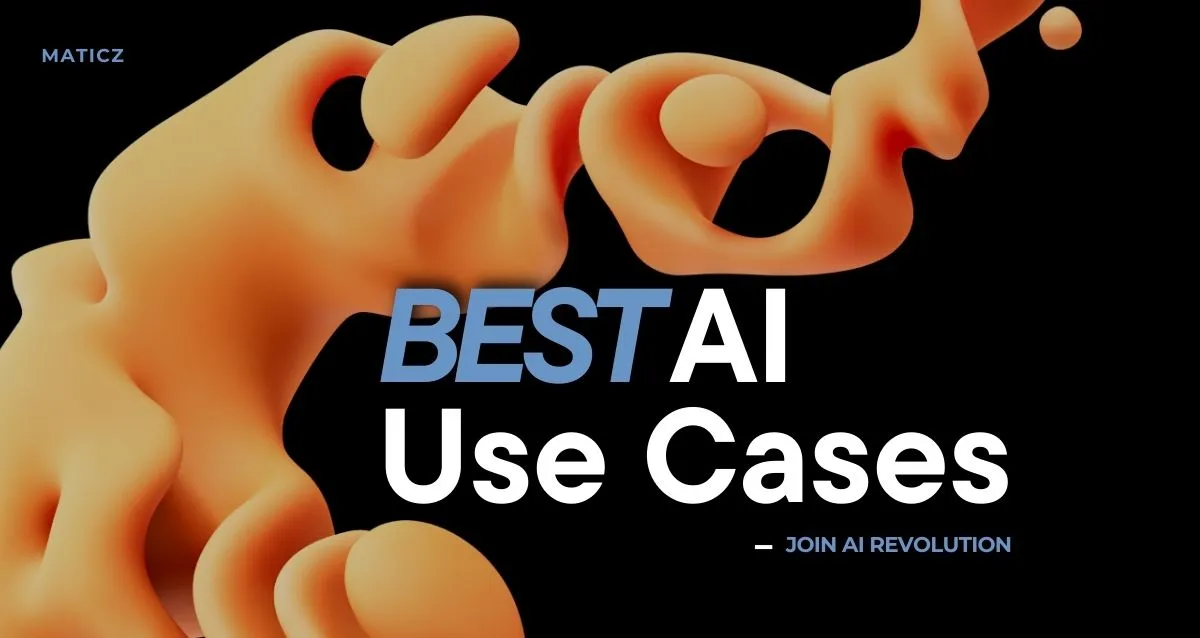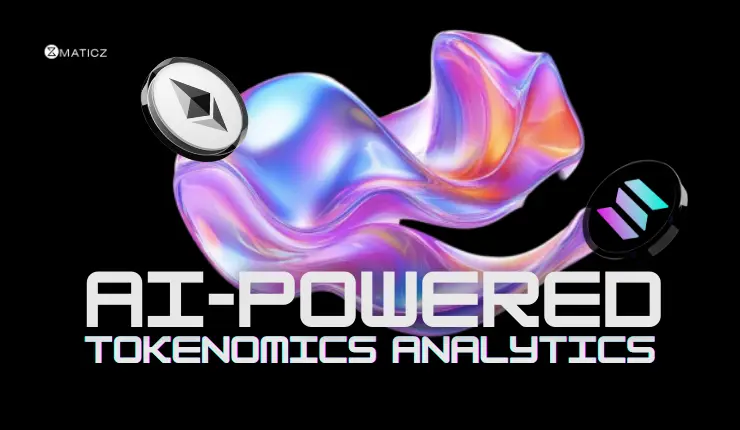Share Posts

Top 10 AI Use Cases for 2026
49
4106
103
Have you ever wondered how Artificial Intelligence (AI) is transforming our world? Well, let me tell you, it's making a huge impact. From virtual assistants to personalized shopping recommendations, AI is everywhere around us. It's revolutionizing industries like healthcare, finance, manufacturing, and entertainment, and unlocking new possibilities that we never thought possible before.
In this blog, we'll explore some of the top AI use cases and see how intelligent systems are making a significant impact across different domains. Learn how AI trends are enhancing efficiency, making informed decisions, and contributing to the evolution of industries in the digital era. So, get ready to discover the many ways in which AI is changing the world for the better.
What is Artificial Intelligence?
Artificial Intelligence (AI) refers to the simulation of human intelligence in machines that are programmed to think and learn like humans. It enables computers to do things that usually require human intelligence, such as problem-solving, reasoning, understanding natural language, perceiving their environment, and learning from experience.
Nowadays, AI is everywhere, impacting several industries like healthcare, finance, manufacturing, and more. You may even be using AI without realizing it through personal assistants like Siri and Alexa or advanced medical diagnostics.
As technology continues to advance, the role of AI in shaping the future of human-machine interactions and problem-solving capabilities is bound to become even more prominent. So, get ready to see more of AI's magic in action.
10 Best AI Use Cases
Let’s have a look at some of the best AI use cases of all time.
1. AI in Healthcare
2. AI in E-commerce
3. AI in Education
4. AI in Fintech
5. AI in Telecommunication
6. AI in Media
7. AI in Gaming
8. AI in Defense
9. AI in Manufacturing
10. AI in Transportation
1. Healthcare
The global healthcare AI market was valued at around $11 billion in 2021 and it is projected to reach $188 billion in 2030 with a CAGR of 37%. Artificial Intelligence allows healthcare organizations to automate all kinds of processes from administrative tasks to patient care. It helps record the data of numerous patients who come in and go out daily.
Using Predictive Analytics, doctors can figure out whether a patient needs surgery or not to avoid unnecessary surgeries carried out on false assumptions. Its counterparts such as Machine Learning and Big Data transform the way we diagnose contagious diseases and also help predict future threats.
The global mHealth apps market size was valued at $ 43.5 billion in 2022 and is expected to grow at a rate of 11.6% from 2023 to 2030. Many healthcare apps are flooding the market that serves as medical assistants for doctors to keep track of their patient’s health and for patients to get reminders on their medications and follow-ups.
Intelligent robots are used to do surgeries with utmost patience and precision. In drug discovery and production, AI helps discover vaccines and drugs. Using Image Analysis, doctors can analyze medical images such as MRIs, CT Scans, and X-rays and find what human eyes could miss out.
2. E-commerce and Retail
When it comes to e-commerce and retail, Artificial Intelligence becomes the transformative force. Popular E-commerce giants like Alibaba, Amazon, and eBay use AI Chatbots and assistants that provide automated responses and professional advice.
AI algorithms analyze customer behavior and purchase history to provide personalized product recommendations. This not only increases the customer base but also the sales. AI-powered chatbots can respond to customer queries and conversationally provide instant responses minimizing human involvement in doing tedious tasks.
Predictive Analytics helps retailers avoid overstock and stockouts. In the supply chain, it predicts delivery times, optimizes routes, and identifies bottlenecks. Visual search technology allows users to search online using images instead of text.
AI algorithms analyze market conditions and competitor pricing to adjust prices in real time allowing retailers to optimize pricing strategies and remain competitive. Improved advertisement prevents wasting money on marketing. Rather, it assesses the shelf display for visual merchandising to ensure products are presented appealingly.
3. Education
Artificial Intelligence provides learning strategies and patterns to which students with different capabilities respond. It can also automate repetitive tasks such as grading, continuous assessment, and assignment checking that are done manually.
Teachers can get a 360-degree view of the students and their performance. Students can access the learning platforms wherever they are at any time. This cutting-edge technology eliminates all geographical boundaries in education.
Its Smart learning content using visualizations and simulations comes in a more simplified, interactive, and engaging way. It consists of new learning materials such as audio, videos, e-books, visualized charts, and many more. These are all updated and customized according to the various learning capabilities.
Virtual AI tutors and assistants like Chatbots assist teachers and students with personalized outreach and insightful feedback on curriculum. It clarifies the doubts and answers various questions of students in the absence of their teachers.
4. Banking and Finance
AI-powered algorithms analyze vast amounts of transaction data in real time, identifying patterns indicative of fraudulent activity. This helps financial institutions detect and prevent unauthorized transactions, reducing the risk of financial fraud.
AI-driven chatbots and virtual assistants provide 24/7 customer support, answering queries, guiding users through account processes, and offering personalized financial advice. This not only improves customer satisfaction but also reduces the workload on humans.
AI assesses a wide range of data, including transaction history, social media activity, and other non-traditional indicators, to generate more accurate credit scores. AI streamlines the underwriting process by automating the analysis of loan applications.
This reduces the time it takes to process loan requests and improves overall efficiency. AI streamlines the underwriting process by automating the analysis of loan applications. This reduces the time it takes to process loan requests and improves overall efficiency.
5. Telecommunication
AI algorithms analyze network data to predict and prevent potential equipment failures or network disruptions. This proactive approach to maintenance minimizes downtime and ensures the reliability of telecommunications infrastructure.
AI enables the creation of self-healing networks that can automatically identify and address network issues in real time, reducing the need for manual intervention and improving overall network resilience.
AI-powered chatbots and virtual assistants handle customer queries, troubleshoot issues, and provide support in real time. AI systems analyze network traffic patterns to detect abnormal behavior that may indicate security threats.
It can assist in dynamically creating and managing network slices in 5G, allowing customization of services for different use cases, such as enhanced mobile broadband, massive machine-type communication, and ultra-reliable low-latency communication.
6. Media
AI-powered tools assist in video and audio editing, making the post-production process more efficient. These tools can cut, splice, and enhance content based on predefined rules or learned preferences.
AI algorithms analyze successful scripts and audience preferences to provide insights and suggestions for scriptwriters, helping in the creation of engaging and targeted content. It helps in delivering targeted advertisements based on user behavior, demographics, and preferences, resulting in more relevant and engaging ads for viewers.
AI is used to detect and prevent copyright infringement by identifying unauthorized use of copyrighted material across various platforms. Assists in automatic language translation and dubbing, making content accessible to a global audience by providing subtitles and dubbing in multiple languages. AI-powered facial recognition technology is used to create more immersive experiences by adapting content based on the viewer's emotional reactions and expressions.
7. Gaming
AI in gaming has become an integral part, transforming the way games are developed, played, and experienced. Behavioral Modeling is used to create realistic and dynamic behaviors for NPCs and enemies in games. These characters adapt to player actions, providing a more immersive and challenging gaming experience.
AI is used to procedurally generate game content, including levels, environments, and characters. It tailors in-game challenges based on the player's skill level, preferences, and past performance. This adaptive approach ensures that the game remains enjoyable and not too easy or too difficult.
Natural Language Processing enables NPCs to understand and respond to natural language, allowing for more realistic and dynamic interactions between players and in-game characters.
AI-driven virtual assistants provide guidance, tips, and suggestions to players during gameplay. These assistants can enhance the gaming experience by offering help when needed, making the game more accessible to players of all skill levels.
Know more: AI Game Development
8. Military and Defense
Artificial Intelligence (AI) has become a game-changer in the field of military and defense, offering advanced capabilities that improve situational awareness, and optimize various aspects of security and warfare.
AI enables autonomous flight, navigation, and mission execution for drones. Unmanned Aerial Vehicles (UAV) can perform reconnaissance, surveillance, and targeted strikes with increased precision and reduced risk to human operators.
AI-powered ground vehicles are designed for tasks such as surveillance, reconnaissance, and logistics support. These vehicles can navigate complex terrains and carry out missions without direct human control. AI-powered exoskeletons and prosthetic devices enhance the physical capabilities of soldiers, providing increased strength, mobility, and endurance. AI algorithms analyze vast amounts of data from sensors, satellites, and surveillance systems.
This includes image recognition, object detection, and signal analysis to provide actionable intelligence for military decision-makers. Pattern Recognition helps identify patterns and trends in large datasets, aiding in the detection of potential threats, activities, or anomalies that may be indicative of security risks.
9. Manufacturing
From predictive maintenance to quality control, AI applications are reshaping various aspects of manufacturing, leading to increased productivity and improved decision-making. AI analyzes data from sensors and equipment to monitor the condition of machinery in real time.
This allows manufacturers to predict when equipment is likely to fail, schedule maintenance proactively, and minimize unplanned downtime. Machine learning algorithms identify patterns in historical data to predict potential equipment failures, reducing the need for reactive maintenance and extending the lifespan of machinery.
AI-powered computer vision systems inspect products for defects, ensuring high-quality manufacturing. This technology can identify imperfections, deviations, or anomalies in real time, facilitating early intervention and minimizing production errors.
Robotic Process Automation (RPA) helps perform repetitive and labor-intensive tasks, improving efficiency and reducing the risk of human errors. Natural Language Processing (NLP) enables human-machine communication through voice commands and natural language interfaces, improving collaboration and facilitating easier control of manufacturing systems.
10. Logistics and Transportation
From route optimization to predictive maintenance, AI applications are reshaping the way goods are transported and delivered. AI in transportation assists in optimizing last-mile delivery by considering factors such as package size, delivery windows, and customer preferences. This ensures timely and cost-effective deliveries.
AI monitors the condition of vehicles and equipment in real time, analyzing sensor data to predict maintenance needs. This condition monitoring minimizes downtime, extends the lifespan of assets, and reduces maintenance costs.
AI monitors the condition of vehicles and equipment in real time, analyzing sensor data to predict maintenance needs. This automated freight brokering minimizes downtime, extends the lifespan of assets, and reduces maintenance costs.
AI is integrated with blockchain to provide end-to-end visibility and transparency in the supply chain. This helps in tracking the movement of goods, verifying authenticity, and ensuring the integrity of the supply chain.
Know more: AI in Supply Chain Management
Final Thoughts
The diverse applications of Artificial Intelligence (AI) across various industries are indicative of the technology's transformative power. It's amazing how AI is being used in healthcare, finance, manufacturing, entertainment, and more! AI is revolutionizing the way we work, interact, and innovate.
AI is making a huge impact on efficiency, decision-making, and the overall customer experience. It's exciting to think about how this technology will play a pivotal role in shaping the future, driving innovation, and addressing complex challenges across a spectrum of domains.
If you're interested in developing tech-driven AI solutions to automate your business processes, then look no further than Maticz, the Best AI development company. We offer turnkey AI solutions and fine-tuned AI models catering to various business niches. Feel free to get in touch with us right away.
Tap Into the Future
The latest insights, posts, and project updates - straight to your inbox.

.webp)


